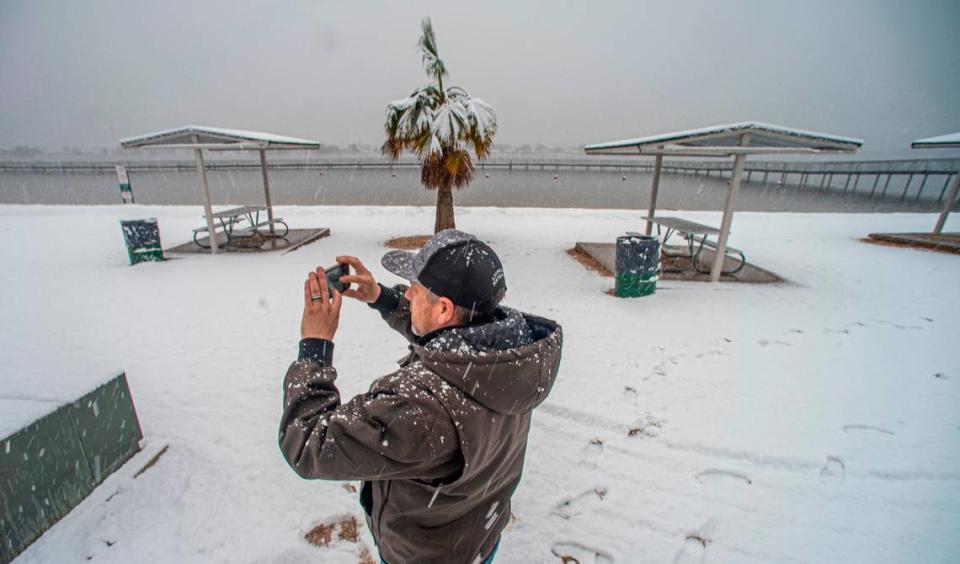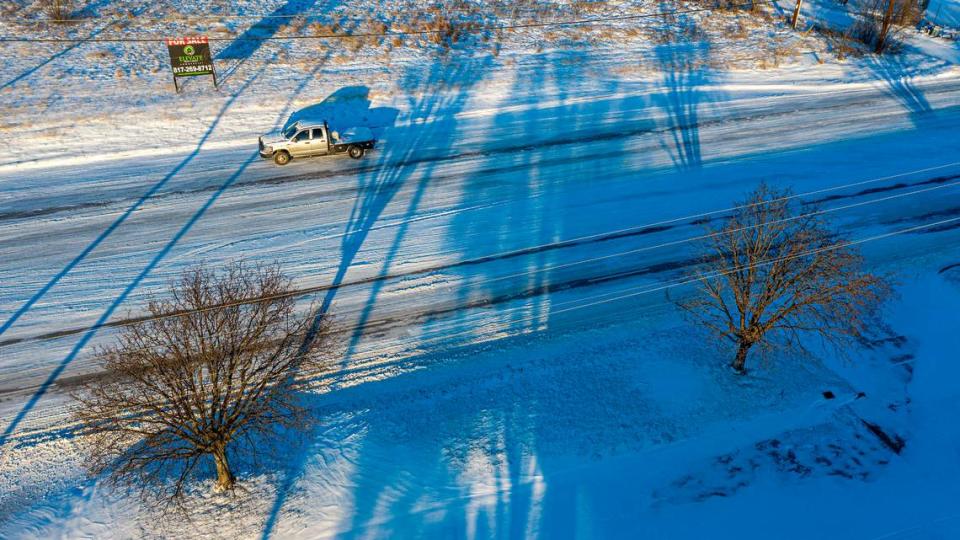North Texas’ first freeze of the season is coming. Here’s how long it’ll stay
Dallas-Fort Worth will see freezing temperatures late Monday and into Tuesday morning, according to an extended forecast from the National Weather Service Fort Worth office Sunday morning.
“Temperatures will fall to or below 32 degrees Monday night into Tuesday morning” says the NWS report. “If you’re under a Freeze Watch, make sure to prepare any outdoor vegetation in order to avoid damages due to the cold.”
This is the first freeze of the season for many in the region, the NWS says.
Freezing temperatures should rise above 32 degrees by 10 a.m. Tuesday morning, the report says.
Sunday rain and storms increase threat of flooding for North Texas
More rain and storms are expected to continue Sunday across most of the Dallas-Fort Worth area. The NWS predicts total rainfall to top 2 inches.
“Soils across much of the region will remain saturated with higher rainfall rates quickly running off and causing minor flooding of streets and typical low-lying, flood-prone areas. Isolated instances of flash flooding will also be possible,” the NWS report warns.
A heavy mist shrouded Benbrook Lake early Sunday morning as a runner began his workout from the parking lot of the Benbrook Community Center YMCA. He started his run on a bike path, heading east parallel to a soggy Winscott Road, just ahead of more stormy conditions.
A cold front that was expected to arrive in North Texas Sunday surged through the Texas Panhandle and western Oklahoma quickly arriving in North Texas before daybreak.
“The difference today will be the increasing north winds 15 to 20 mph with gusts in excess of 30 mph. In addition, falling temperatures into the 40s north and 50s across western Central TX will make it feel downright winter-like with the dampness of the air, the NWS report states. “Wet, blustery/windy, and chilly weather is expected today into tonight.”

Why worry about the freeze in North Texas?
The Farmers’ Almanac prediction for this year’s Texas winter was dire: “The Texas area will see lots of cold temperatures and some storms will keep people in the area ‘busy’ during the middle of January.”
Back in June, the Star-Telegram reported that scientists at the Climate Prediction Center issued an El Nino Advisory noting that El Nino conditions are present and are expected to gradually strengthen into the winter.
Bundling up as colder days arrive is a given. But for many with green thumbs in the area, the freezing temperatures is a worry because of the effect the cold has on plants. Here’s what the Farmers’ Almanac says about the levels of freezing temperature and its effect on plants:
Light freeze: 29-32 degrees — tender plants are killed.
Moderate freeze: 25-28 degrees — widely destructive to most vegetation.
Severe freeze: 24 degrees and colder — heavy damage to most garden plants.

The great Texas freeze of 2021
One of the factors that turned Texas into an icy danger zone was the Arctic Oscillation effect, says the National Oceanic and Atmospheric Administration.
“A deep freeze impacted parts of the continental United States (CONUS), remarkably engulfing the entire state of Texas,” according to the NOAA report. “Every county in the state as far south as the Rio Grande River and northeastern Mexico was placed under a Winter Storm Warning, with many experiencing wind chill values below zero. It was the coldest winter storm for Texas since December 1989.”
Months after the freeze, many Fort worth residents were still reeling from the event that damaged many homes and upended just as many lives.
Roughly 32,630 insurance claims were submitted by Tarrant County residents in the 40 days following the storm, according to data from the Texas Department of Insurance. The storm resulted in 456,531 claims across the state with an estimated $8.2 billion in insured losses. Nearly 82% of those claims were from residential properties.
“It is ruined,” Jeff Hencken told the Star-Telegram at the time.
Water had burst from a frozen pipe in an upstairs bathroom, flooding the carpet and soaking through the floor and into the drywall. The ceiling below had collapsed.

